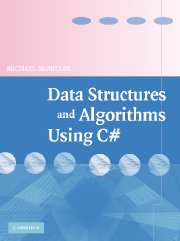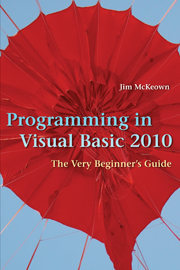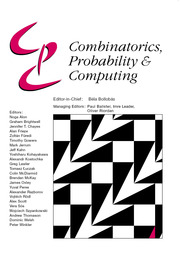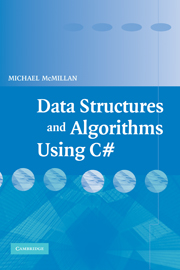Data Structures and Algorithms Using Visual Basic.NET
This is the first Visual Basic.NET book to provide a comprehensive discussion of the major data structures and algorithms. Here, instead of having to translate material on C++ or Java, the professional or student VB.NET programmer will find a tutorial on how to use data structures and algorithms and a reference for implementation using VB.NET for data structures and algorithms from the .NET Framework Class Library as well as those which must be developed by the programmer. In an object-oriented fashion, the author presents arrays and arraylists, linked lists, hash tables, dictionaries, trees, graphs, sorting and searching as well as more advanced algorithms, such as probabilistic algorithms and dynamic programming. His approach is very practical, for example using timing tests rather than Big O analysis to compare the performance of data structures and algorithms. This book can be used in both beginning and advanced computer programming courses that use the VB.NET language and, most importantly, by the professional VB programmer.
- Only algorithms and data structures textbook using Visual Basic.NET
- Teaches both implementation of data structures and algorithms and the use of the .NET Framework collection classes
Product details
May 2005Paperback
9780521547659
414 pages
235 × 191 × 21 mm
0.71kg
75 b/w illus.
Available
Table of Contents
- 1. Collections
- 2. Arrays and the array class
- 3. The arraylist and sortedlist classes
- 4. Basic sorting algorithms
- 5. Basic searching algorithms
- 6. Stacks and queues
- 7. BitArrays and the BitVector structure
- 8. Strings, the string class and the StringBuilder class
- 9. Special string classes - StringCollection, StringDictionary and StringEnumerator
- 10. Pattern matching and text processing - using the RegEx and supporting classes
- 11. Hash tables
- 12. Dictionaries - the DictionaryBase class and specialized dictionary classes
- 13. Linked lists
- 14. Binary trees and binary search trees
- 15. Sets
- 16. Advanced sorting algorithms
- 17. Advanced searching algorithms
- 18. Graphs and graph algorithms
- 19. Greedy algorithms
- 20. Probabilistic algorithms
- 21. Dynamic programming.









